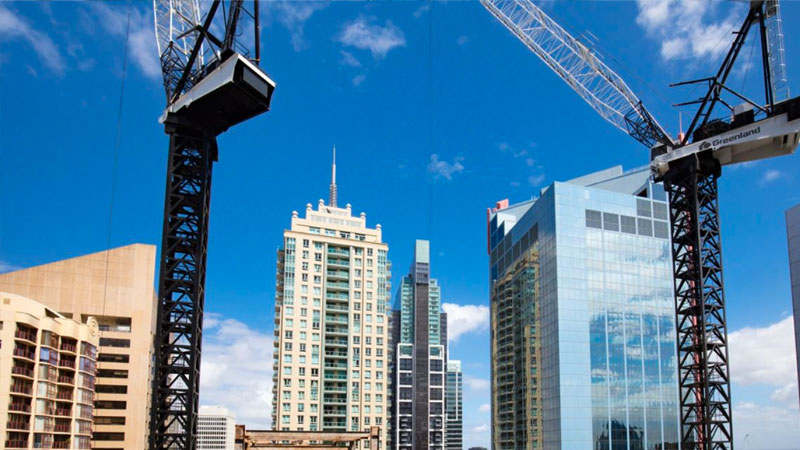House Building Offsets Slowing Apartment Sector
Construction activity picked up slightly in February with further improvement in house building activity contributing to the industry's milder rate of decline.
The performance of construction index, published by Ai Group and the Housing Industry Association, takes its scores on a weighted mix of activity, orders and new business, deliveries and employment.
Building activity increased by 1.4 points to 42.7 in February indicating a further easing in the construction industry’s rate of decline.
Employment and average wages were the biggest drags on the industry in February, with the employment sub-index shedding 4.8 points to 36.9—for a twentieth consecutive month—and wages slumped 5.1 points to 53.6.
“Construction sector employment declined again as builders struggled in the face of lower selling prices, rising wage and non-wage costs and a further drop in new orders,” Ai Group head of policy Peter Burn said.
Across the industry, activity was up 2.8 points to 45.1, new orders 4.8 points to 45.7 and supplier deliveries 2.5 points to 41.9 continued to contract in February, but at slower rates relative to the previous month.
Performance of Construction Index (PCI)
| Key numbers | Index this month | Change from last month | 12-month average |
|---|---|---|---|
| Australian PCI | 42.7 | 1.4 | 42.1 |
| Activity | 45.1 | 2.8 | 42.1 |
| Employment | 36.9 | -4.8 | 42.1 |
| New Orders | 45.7 | 4.8 | 41.3 |
| Supplier Deliveries | 41.9 | 2.5 | 43.5 |
| Input Prices | 68.2 | -4.9 | 66.6 |
| Selling Prices | 68.2 | -2.8 | 40.1 |
| Average Wages | 53.6 | -5.1 | 58.7 |
^The PCI index, based on survey responses of industry professionals, indicates contraction when below 50 and expansion when it measures above 50. The further the figure from the median 50, the faster the pace of decline or growth.
The ongoing growth in house prices has continue to reignite confidence in the housing market, with property values lifting across the combined capital cities again by 1.2 per cent over February.
As a knock on, the construction sub-index for house building was the best performing of the four construction sectors in February at 55.0 points, with activity expanding at its highest rate in close to two years.
In contrast, apartment building at 35.9 points remained firmly negative, indicating a rate of decline that was largely unchanged from the previous month.
“The apartment market continues to contract after a record number of completions,” HIA economist Angela Lillicrap said.
“Apartment commencements are likely to pause while those that are currently under construction are completed and occupied.”
This lengthy period of contraction reflects a long slow decline from all-time peaks in apartment approvals and activity in 2017.
Engineering construction at 40.5 points also indicated a further fall in the month, but at a slower rate than in January.
Across other industry sectors, a lack of new tenders and project delays were key factors reported as constraining activity.

Riskwise chief executive Doron Peleg said an increase in construction and approvals did not necessary bode well for the property market as indicated by the record number of developer insolvencies.
“Developers are at risk of insolvencies and this means they need to mitigate this risk by ensuring they have a sustainable business model, focus on the ‘missing’ middle ring and address imbalances in the property market.”
“Focusing on the missing middle is by far more of a solution than taking the risk of off-the-plan high-rise development.”
The construction industry is also bracing due to the unfolding COVID-19 epidemic—which is already affecting parts of the residential market and is also slowing construction schedules.
The impact of the virus is now spreading to global supply chains, with building contractors warning clients of potential delays on projects because factories have closed in China—the source of many building materials used in Australian projects.














